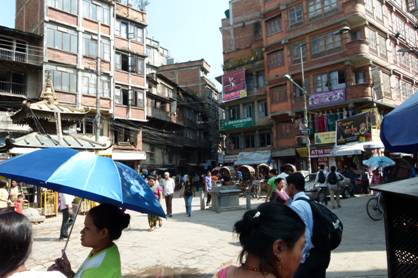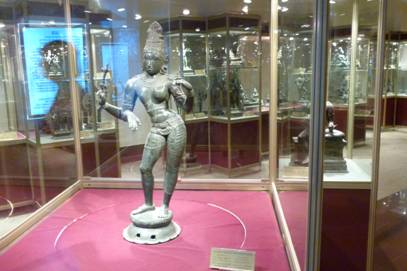Introduction
In October 2012 we travelled to Nepal and South India. We had been to North India a couple of years ago and wanted to see more of this fascinating country; that will be the most populous country in the World within the next two decades.
In many ways India is like a federation of several countries; so different is one region from another. For my commentary on our trip to Northern India in 2009 Read here...
For that matter Nepal could well be part of India as it differs less from some regions of India than do some actual regions of India.
These regional differences range from climate and ethnicity to economic wellbeing and religious practice. Although poverty, resulting from inadequate education and over-population is commonplace throughout the sub-continent, it is much worse in some regions than in others.

The availability of electricity and electronic communications is also problematic for much of the population.
In many places both in Nepal and India community infrastructure is very run-down; much of it dating back to the 1930’s and even earlier.
We saw some buildings in India that have been in commercial use since the 1700’s.
Even relatively recent electricity infrastructure is in poor shape. Many poles are leaning, wires drooping and transformers dreadfully rusty and often leaking oil, and possibly highly toxic PCBs (polychlorinated biphenyls) widely used in transformers and switch gear until the 1970’s.
Trade
A great deal of the history of India and the sub-continent has been dominated by trade; and competition for the control of the trade routes.
India was well known to Europeans for hundreds of years before Christ. Trade routes between the Mediterranean and India have existed throughout that time. Alexander the Great (Macedonian/Greek) invaded northern India in 327 BCE.
Within a hundred years southern India was trading extensively with the Parthian (Persian) Empire (from the mid-3rd century BCE).
This trade had picked up significantly by the beginning of the common era (AD) under the Romans. As a result Roman coins and artefacts have been found at numerous locations in south India.
Romans imported Indian lime, peach, and various other fruits for medicine and used herbs, spices, pepper, lyceum, sesame oil and sugar in their food. Indigo was imported as dye and cotton cloth was imported for clothing as were Indian pearls. Ebony was imported for furniture. Indian tigers, rhinoceros, elephants, and serpents were imported for the Roman Circus.
In trade Rome exported olive oil, wine and gold and other metals like tin.
During the Bronze Age from about 1500 BCE world trade was dominated by metallic tin. Tin is an essential metal in smelting the tin-copper alloy bronze. For example a ship wrecked off the coast of Turkey around 1300 BC carried over 300 copper bars weighing 10 tons, and approximately 40 tin bars weighing 1 ton. The Romans began to gain an effective monopoly over the trade in tin from about 100 BCE.
Bronze was widely used in India for cooking and household vessels, weapons, and still is, for religious artefacts; statues – by the thousand.

Obviously trade in copper is also required but this is more abundant and many more countries had domestic reserves of various copper ores, making it less susceptible to monopoly.
It is not surprising then that cultural and religious similarities can be found between ancient Europe and India that precede the Islamic invasions of the common era.
Most of these ancient cultures had polytheism in common but in addition there were small but established Jewish communities in India; possibly from as early as 587 BCE.
With the growth of Islam in the 8th Century CE and its absorption of most of the earlier Christian Byzantine and Persian empires, Arab traders dominated the trade in spices both overland across modern Afghanistan and Pakistan to India and by sea down through the Red Sea and Persian Gulf to Arabian Sea and India then to Malaya and Indonesia; the Spice Islands.
In 1498 the Portuguese navigator Vasco da Gama discovered the sea route to India via the Cape of Good Hope (South Africa). In his divvying up of the planet between Spain and Portugal the Pope (see my article on Spain) ceded India to Portugal; unbeknown to the Indians.
Soon not only were there Portuguese trading posts in Southern India but Roman Catholic missionaries had begun saving the heathen souls that they found there; and to wage their on-going opposition to Islam. The last of these Portuguese footholds to disappear in India was Goa, one of the stops on our itinerary.
But before going to India we wanted to see Kathmandu in Nepal.
